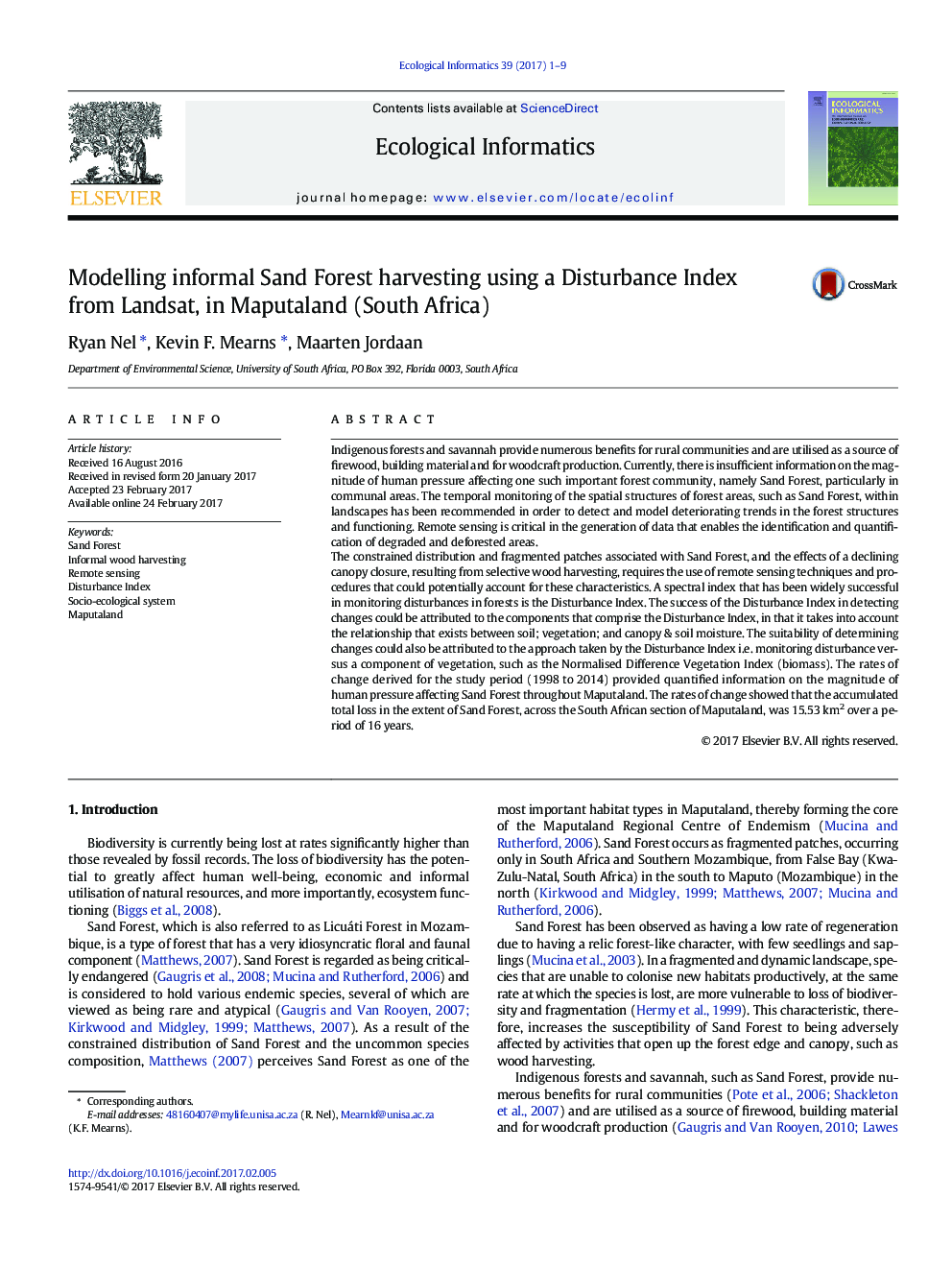| کد مقاله | کد نشریه | سال انتشار | مقاله انگلیسی | نسخه تمام متن |
|---|---|---|---|---|
| 5741937 | 1617195 | 2017 | 9 صفحه PDF | دانلود رایگان |

- Temporal monitoring to detect and model deteriorating trends
- Success of the Disturbance Index in detecting changes
- Magnitude of informal wood harvesting affecting Sand Forest quantified
- Accumulated loss of Sand Forest was 15.53Â km2 over a period of 16Â years
Indigenous forests and savannah provide numerous benefits for rural communities and are utilised as a source of firewood, building material and for woodcraft production. Currently, there is insufficient information on the magnitude of human pressure affecting one such important forest community, namely Sand Forest, particularly in communal areas. The temporal monitoring of the spatial structures of forest areas, such as Sand Forest, within landscapes has been recommended in order to detect and model deteriorating trends in the forest structures and functioning. Remote sensing is critical in the generation of data that enables the identification and quantification of degraded and deforested areas.The constrained distribution and fragmented patches associated with Sand Forest, and the effects of a declining canopy closure, resulting from selective wood harvesting, requires the use of remote sensing techniques and procedures that could potentially account for these characteristics. A spectral index that has been widely successful in monitoring disturbances in forests is the Disturbance Index. The success of the Disturbance Index in detecting changes could be attributed to the components that comprise the Disturbance Index, in that it takes into account the relationship that exists between soil; vegetation; and canopy & soil moisture. The suitability of determining changes could also be attributed to the approach taken by the Disturbance Index i.e. monitoring disturbance versus a component of vegetation, such as the Normalised Difference Vegetation Index (biomass). The rates of change derived for the study period (1998 to 2014) provided quantified information on the magnitude of human pressure affecting Sand Forest throughout Maputaland. The rates of change showed that the accumulated total loss in the extent of Sand Forest, across the South African section of Maputaland, was 15.53Â km2 over a period of 16Â years.
Journal: Ecological Informatics - Volume 39, May 2017, Pages 1-9